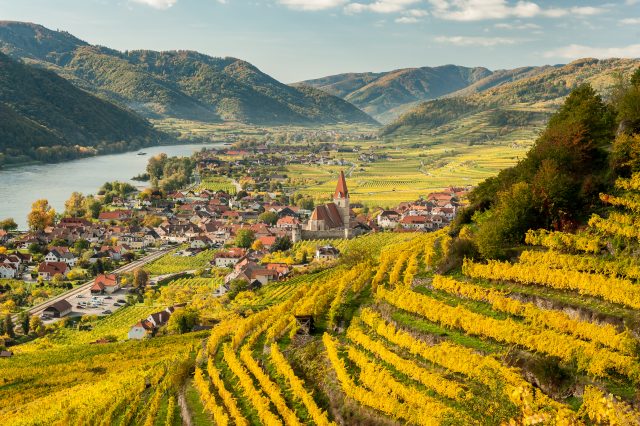This website uses cookies so that we can provide you with the best user experience possible. Cookie information is stored in your browser and performs functions such as recognising you when you return to our website and helping our team to understand which sections of the website you find most interesting and useful.
Austrian winemakers ‘put through their paces’ on 2023 vintage
Dry spells, challenging damp periods and storms meant that a lot of work was required in Austria’s vineyards for the 2023 vintage, the Austrian Wine Marketing Board has announced.

According to the organisation, winemakers were “put through their paces”, but the hard work was rewarded with “a glorious autumn”.
It said expressive, dense and well-balanced white wines can be expected as well as a “brilliant” red wine vintage, it claims. In addition, winemakers were also to produce significant volumes of Eiswein, or ice wine, where grapes were able to freeze on the vine due to the weather conditions this year.
After an “extremely dry” winter last year, this was followed by a wet spring and late budding, which was “generally viewed” positively as it avoided damage from late frosts. But frequent coulure caused yield losses, while the early outbreak of Peronospora required “careful and diligent plant protection measures”, it said.
The summer had hot spells but “hardly caused” drought damage, and there were also some hailstorms across most grape-growing regions. Rain in August, just before harvest, triggered a “strong spurt” in the ripening process, and as a result the main harvest began early and progressed quickly.
Regions
In terms of specific vineyards, Niederösterreich (Lower Austria), Wien (Vienna) and Burgenland, winemakers were able to harvest very ripe, healthy berries, yielding powerful, juicy white wines with pronounced fruit aromas and good varietal typicity.
In many regions, acidity was somewhat lower than in previous years, whereas the alcohol content was somewhat higher.
This vintage will probably see Grüner Veltliner displaying stronger grapy aromas and notes of pome fruit, rather than a peppery, tobbacoey spiciness, it claimed.
Rieslings and Pinot varieties can be expected to produce well- balanced and fruit-led wines, while this vintage will give the aromatic varieties and Austria’s native grapes yet another opportunity to show their unique varietal characteristics.
Precision
Conditions differed in Steiermark, with heavy rain resulting in cool, fresh white wines with “marked precision and elegance” that are dense on the palate, with a moderate alcohol content. Sauvignon Blanc and Gelber Muskateller display a “distinct piquancy and intense fruit aromas”.
The vineyards in the warmer regions of Vulkanland Steiermark and the cooler vine-covered hills of Weststeiermark have also yielded wonderful results: remarkable Pinots and delicate, crisp Schilchers.
In Burgenland’s red-wine-producing areas, as well as in Niederösterreich’s main red-wine growing regions, Carnuntum and the Thermenregion, producers were able to harvest fully ripe, perfectly healthy grapes with a high sugar content and mature tannins. There is an expectation that the 2023 vintage will “hold their own” against the 2019 and 2021 vintages.
Frosts
Frosts in early December in Niederösterreich and Burgenland enabled a significant volume of high-quality Eiswein to be harvested. Due to the particularly early harvest of this speciality, the wines should be characterised by clear fruit aromas and strong vibrancy, it said.
In addition, a very clean Botrytis infection around Lake Neusiedl provided for high-quality sweet wines with great promise.
The still young wine-growing areas of Oberösterreich reported their best vintage to date with exceptionally ripe, aromatic and round wines.
In Kärnten, conditions were “somewhat more difficult” it said. This region expected tighter, robust wines displaying good varietal typicity. Tirol (Tyrol) and Vorarlberg have produced ripe, rich wines, albeit in smaller volumes.

